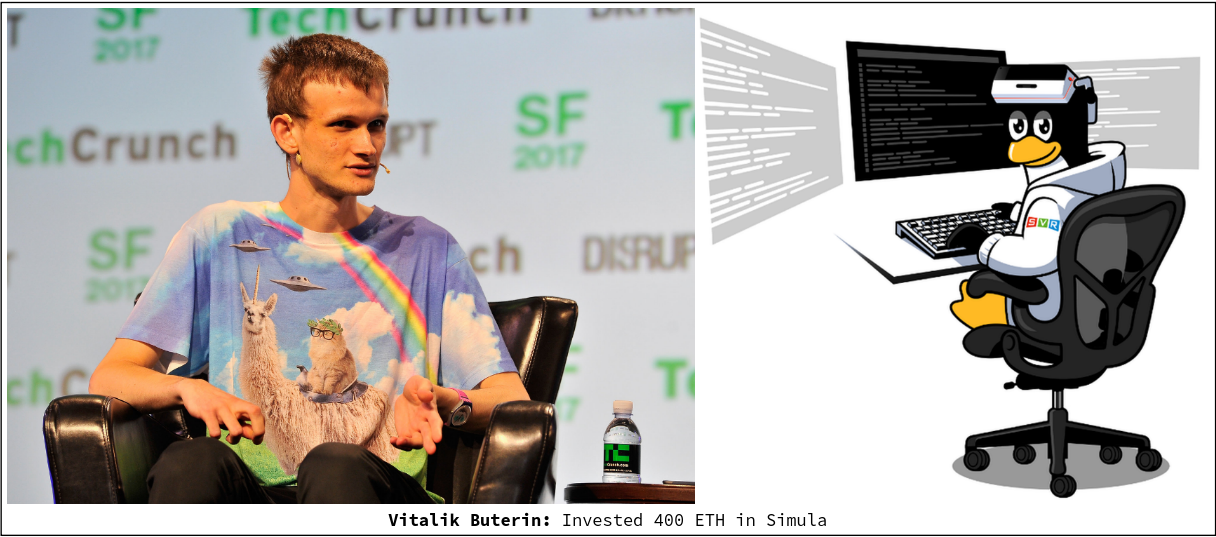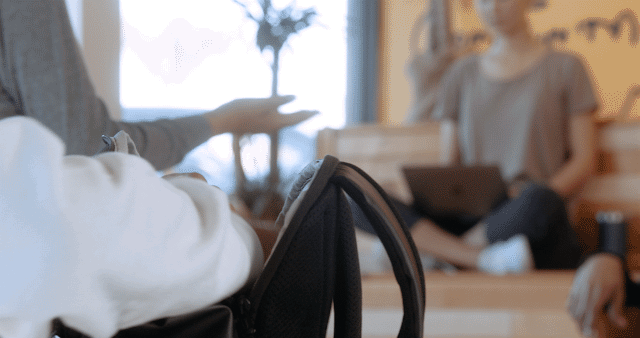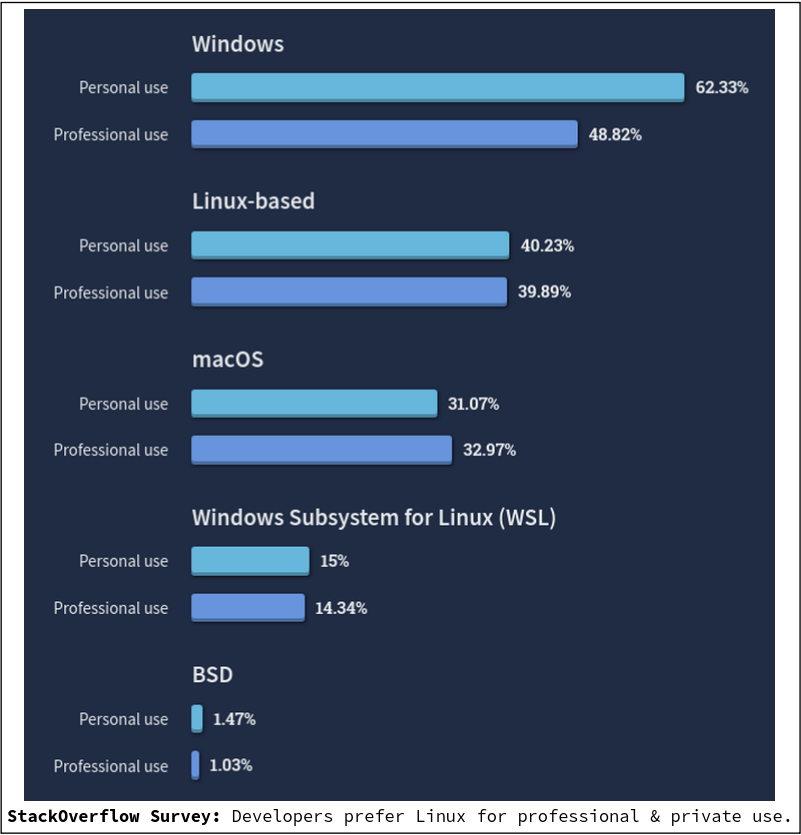1 We've got some good news!
Vitalik Buterin has decided to back Simula's VR computing project :]

Vitalik was one of the earliest preorderers of our Founders Edition headset, as well as our Review Unit's first alpha tester. Overall, we feel super fortunate to have had his backing!
One totally-not-in-the-usual-categories thing that I am excited to try out next year is @SimulaVR https://t.co/apzzy3qV2D
— vitalik.eth (@VitalikButerin) December 11, 2022
Before Simula, he had expressed interest in open hardware & open VR, but he was by no means a blanket supporter of all-things-VR. So we take it as a high compliment he appreciated our "VR computing as a laptop replacement" use case (something we feel is true for a lot of our backers, who aren't necessarily hardcore VR gamers already).
My concern with VR is similar to some anti-crypto people's concern about crypto: a feeling that people are "in love with the idea of it" in a way that far outpaces actual applications.
— vitalik.eth (@VitalikButerin) October 28, 2022
Just like with crypto, I do think important apps exist! But "VR for the sake of VR" won't work
Before investing, he told us he wanted to give us a chance to do the best we could and that "the possibility of there existing an open alternative for the VR computing form factor is worth a lot" to him. We're really thankful to have the backing of someone as cool and thoughtful as Vitalik, and in a way there's something really pure about getting capital from someone interested in the product primarily as a user-enthusiast (as opposed to being a member of the professional investor class). We're proud that all of our other inestors fall under this umbrella as well.
2 Updated Capital Model
Our updated capital situation is now as follows.
2.1 Total Cash Involvement to Date
| Amount | |
|---|---|
| Starting Capital (2021-2022): | $285K |
| Preorders (2022-2023): | $334K (117 units) |
| Early Investment (SAFEs) | $130K |
| Vitalik Buterin Investment (SAFE) | 400 ETH ($623,200) |
| Total Cash Involvement: | $1.37M |
2.2 Remaining Funds to Raise: $1,000,000
In terms of our remaining project costs, recall that our expenses can be broken down into the following 3 categories (with each category including a 10% buffer):
- Variable costs (components). Principle components include raw materials, displays, lenses, NUC compute units, carrier boards, batteries, and cameras. Also included are things like fasteners, screws, and springs.
- Labor costs (annually recurring). Includes salaries for our existing 3-person team, assembly labor (which scales with batch size), and money to hire additional engineers (also scales with batch size). We also include a small allocation towards legal and accounting expenses.
- NRE costs (capital expenditures). Includes CNC, injection mold tools, assembly line setup (fixtures, applicators, fastening tools, etc), and lens tooling. A few of our suppliers also pass on some of their own NRE to us. We also include an allocation for regulatory compliance & testing.
With that in mind, our remaining costs range from $500K-$1.2M, depending upon our target batch size and/or our runway length:
| 125 Units (1 year of runway) | 250 Units (1 year of runway) | 250 Units (1.5 years of runway) | 250 Units (2 years of runway) | |
|---|---|---|---|---|
| Variable Costs (Components) | $376,158.11 | $635,790.10 | $635,790.10 | $635,790.10 |
| Labor Costs (Annually Recurring) | $396,000.00 (1 year of runway) | $396,000.00 (1 year of runway) | $594,000.00 (1.5 years of runway) | $792,000.00 (2 years of runway) |
| NRE Costs (Capital Expenditures) | $373,480.00 | $373,328.00 | $373,328.00 | $373,328.00 |
| Vitalik Buterin Investment | 400 ETH ($623,200) | 400 ETH ($623,200) | 400 ETH ($623,200) | 400 ETH ($623,200) |
| Total Funds Left to Raise | $522,438.11 | 781,918.10 | $979,918.10 | $1,177,918.10 |
As a sweet spot we are targeting a ~$1M raise to finish our round, which gives us a 250 unit batch size and 1.5 years of runway (which can be extended with more sales).
3 Use of Funds
We've been getting our affairs in order with the recent investment. Overall, we expect to the new funds to be fairly evenly distributed across the 3 categories (components, labor, & machines):
- Components: Though we can't afford all of our components yet, placing an order for our VR Displays is pretty urgent (since it has bottlenecking lead time).
- Machines & Capital Expenses: We are purchasing PCB assembly equipment (e.g. a pick-and-place machine) so that we don't have to deal with a local PCBA ever again. (Waiting months for our boards to be assembled by PCBAs who don't care about us has been insanely time-consuming and frustrating). We are also help outfit our buildout location for small batch manufacturing.
- Labor: Though we're still forced to keep things pretty lean, we're keeping our eyes peeled for an additional EE hire (preferably one with generalist tendencies) to help out on things like our custom FPGA board and our detachable compute pack's Carrier Board. If you're interested in the job, shoot me an email at georges@simulavr.com.
4 Still Seeking Investment!
We're still seeking investors -- both institutional and angels -- who align with our VR computing vision. Shoot me an email at georges@simulavr.com if you're curious to learn more.
4.1 Simula's Vision: VR which affirmatively replaces your laptop
We are explicitly building headsets which are meant to 100% replace PC/laptops as people's primary computing device.

Simula's thesis: While most people have thought the future of VR/AR has been primarily in games & entertainment, the truth is that VR offers a superior way for performing knowledge work: more screens, bigger screens, improved immersion, improved focus, more privacy, and fully portable freedom of movement. In VR you can sit up, lean back, walk or even lay down while you compute…all in a compact form factor that saves on desk space. We believe that in the coming years, nearly every office worker in the developed world will be using VR/AR to perform their creative and professional office work.

With the upcoming release of Apple's headset, the age of ubiquitous VR computing is now closer than ever. Yet despite it being more than 10 years since the release of the original Oculus, people still cannot use any VR headset to realistically replace their laptop (and this will not change with the release of the Vision Pro). While we expect consumers to be really excited about a VR takeoff in 2024, we want to give people an alternative to Meta and Apple: one that is based on Linux Desktop (preferred by software developers) instead of the Android/iOS ecosystems their headsets are built over, and one which is focused on productive desktop computing over casual gaming, social networking, or the passive consumption of entertainment.

The Simula One is our first iteration towards this goal. Its selling points include:
-
Native VR computing (not WiFi streaming). No latency or bandwidth limitations to deal with from tethering to another host.
-
Insanely good text clarity. Higher pixel density (35.5 PPD) than any portable VR headset currently on the market (e.g., 56% higher than the Quest Pro, 42% higher than the Quest 3, & 220% higher than the Valve Index). This is extremely important for facilitating multi-hour VR sessions without eye fatigue.
-
100% office app coverage (via Linux Desktop). Any app that runs on a premium Linux laptop runs on our headset. Your native apps are not limited to Android or iOS platforms.
-
Laptop level compute specs. Includes specs comparable to premium office laptops (i7 13th gen processor, x86 architecture, up to 32GB of RAM).
-
AR Mode for touch typing. High-resolution passthrough cameras allow you to see your environment and keyboard while you compute.
-
Proper hackability. Simula is built over FOSS, and isn't tethered to Meta or other platforms. If there's something about our headset you want to change or tweak, you're free to do so.
4.2 How To Contact Us
If you find our VR computing vision compelling, and are in a position to help us in the form of investment, let us know! Interested parties (accredited investors) should reach out to me at georges@simulavr.com.